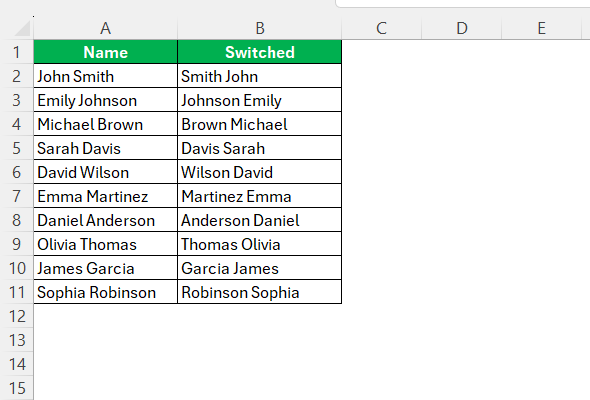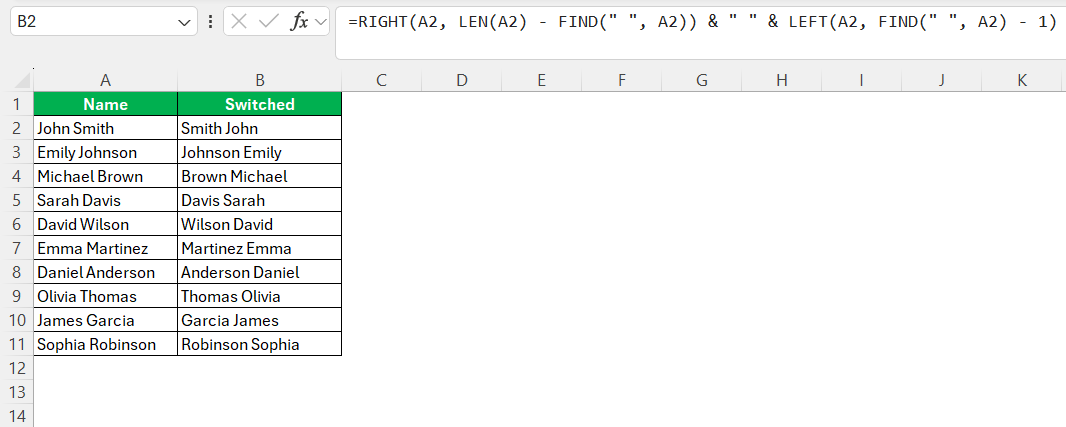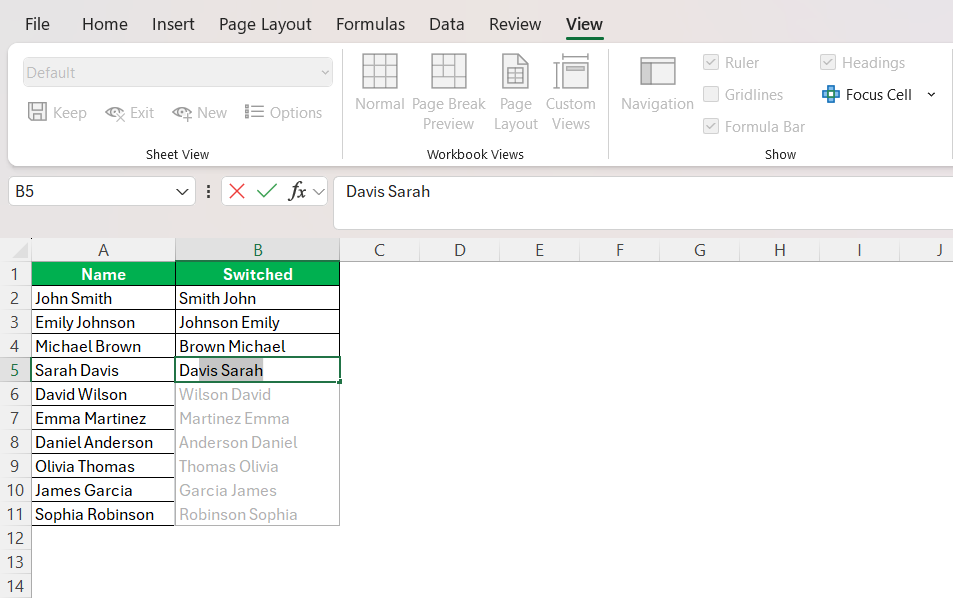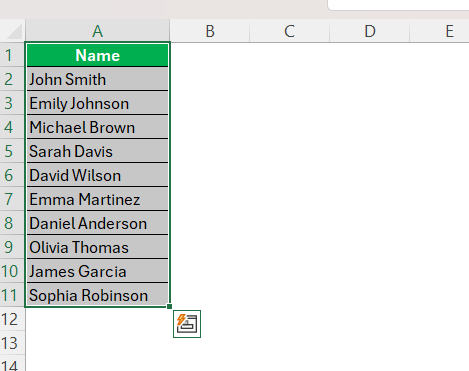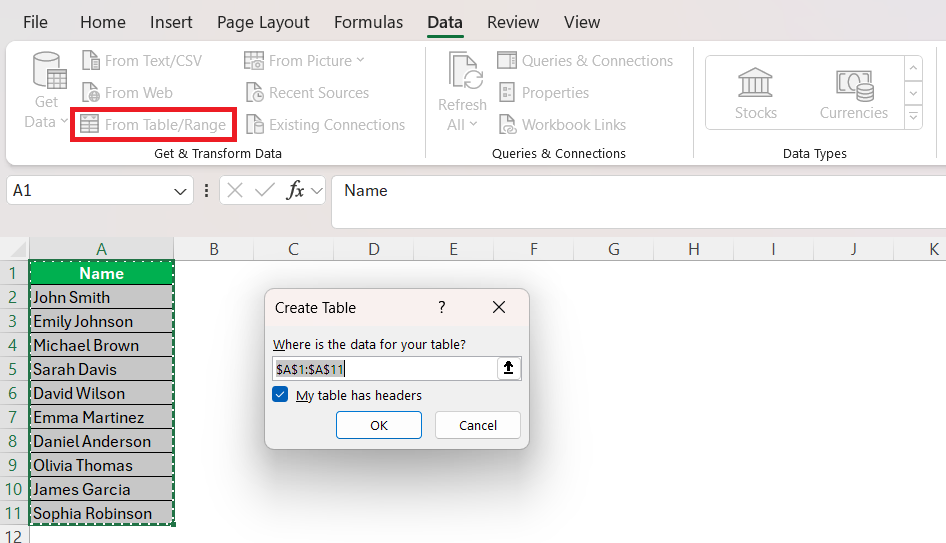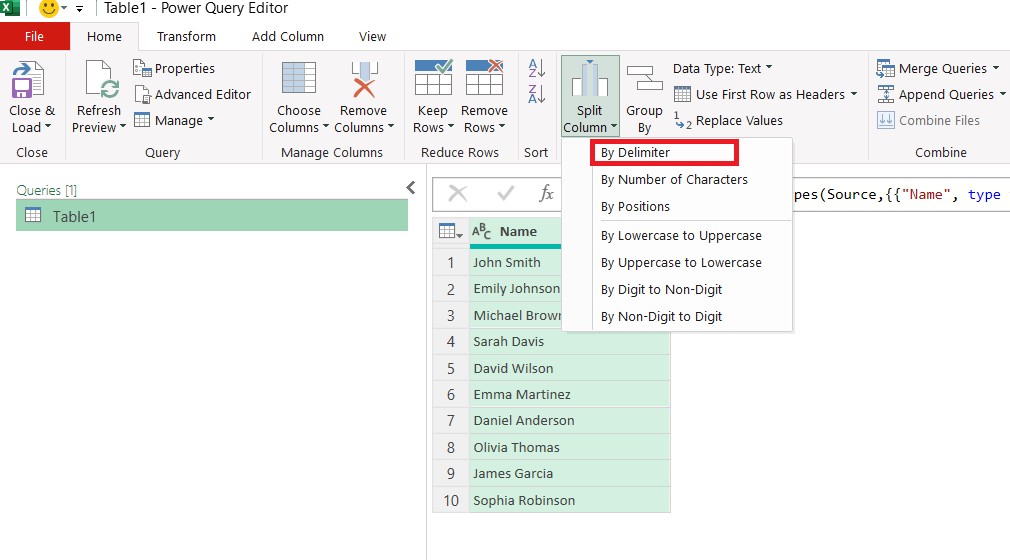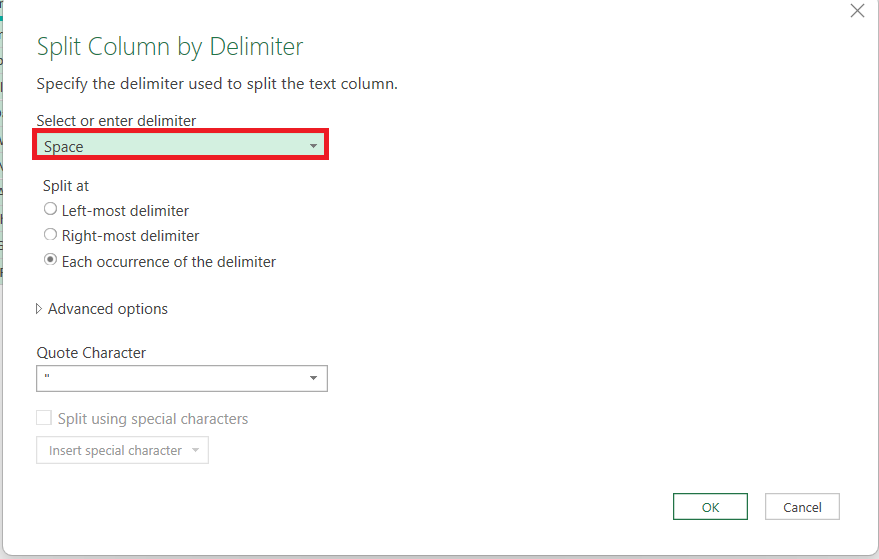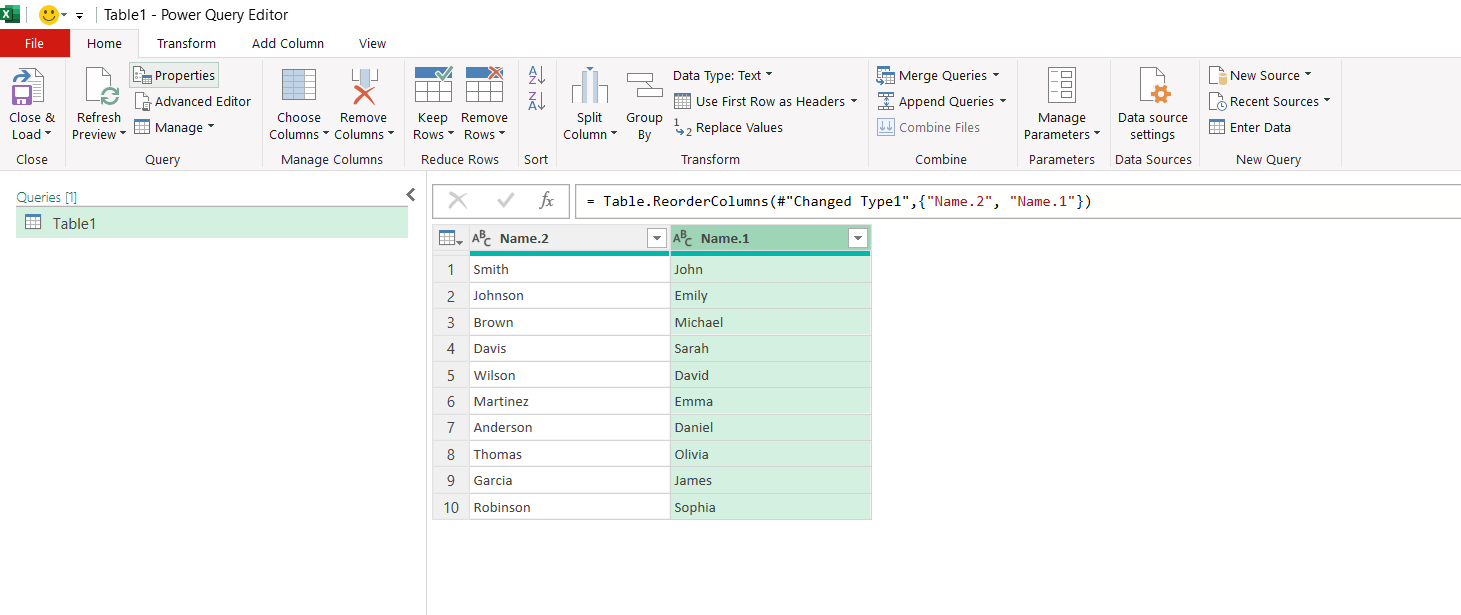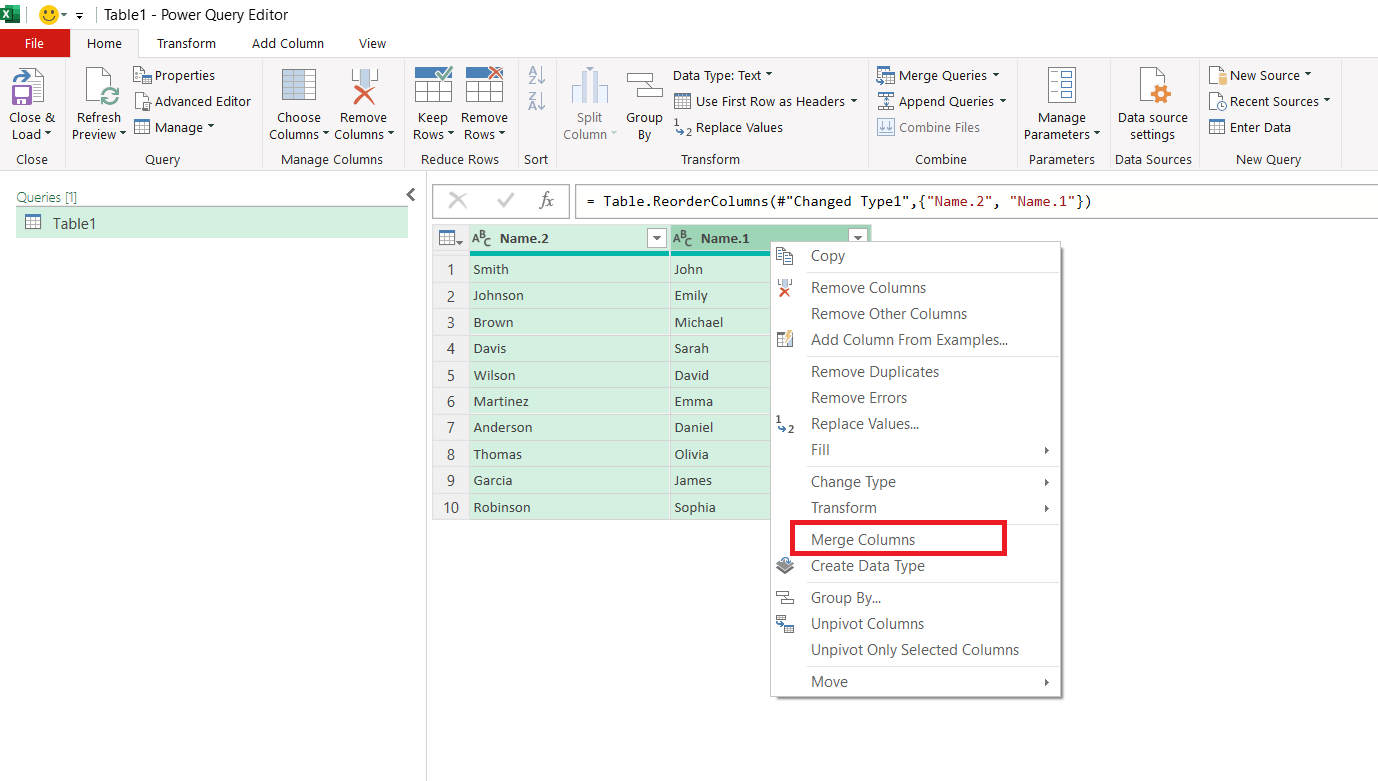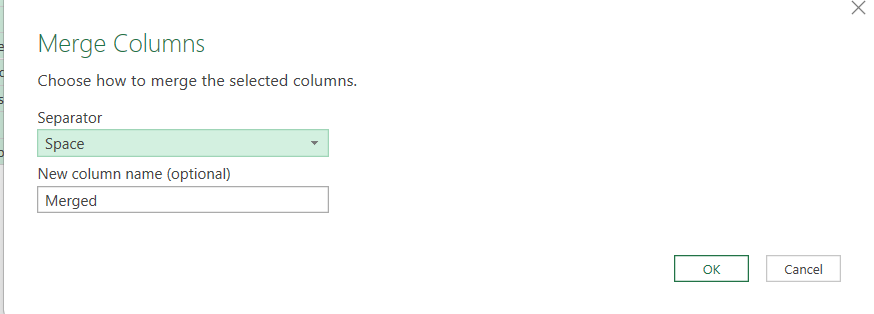Switching first and last names in Excel can be handy when you’re cleaning up a dataset or standardizing name formats. I’ll walk you through three different ways to switch from first to last names around quickly and efficiently: using Flash Fill, Text to Columns, and a simple formula. You’ll find each method useful depending on the structure of your data and what you need. Let’s dive in!
Key Takeaways:
- Flash Fill is a quick, easy way to swap first and last names by recognizing patterns and filling in names automatically.
- Text to Columns is ideal for splitting names before rearranging them, especially if names need to be separated into different columns.
- Formulas like RIGHT, LEFT, and FIND offer a dynamic solution for name switching, updating automatically if the original data changes.
- Power Query handles large datasets and complex name formats, making it a powerful tool for organizing extensive contact lists.
Table of Contents
The Magic of Excel for Name Management
Turning Tables with Excel Tips
In the wondrous realm of data management, Excel emerges as an indispensable ally. Particularly when it comes to managing an extensive list of contacts, we often encounter the need to refine name formats. Whether it’s aligning for mail merges or simply ensuring consistency, mastering name management within Excel is a valued skill.
Swapping Names Simplified
It’s brilliant when a complex task can be simplified to a few clicks, and swapping first and last names in Excel is one such task. Initially, it may seem daunting, but with the right approach, reorganizing names need not disrupt our productivity. Excel offers various methods—formulas, Flash Fill, and more—to ensure that what could be a tedious and error-prone process is transformed into a smooth and efficient operation. We’ll explore these methods as we dive deeper into the art of name-swapping in Excel.
Simplify your data sets and save precious time by following the techniques I’ll share with you. Whether dealing with hundreds of contacts in a corporate directory or just organizing a small workshop attendee list, Excel is equipped to handle the challenge with ease.
Switch from First to Last Names in Excel
Formula Trickery: Quick Name Reversals
Using Excel formulae for name reversals feels almost like performing a magic trick. With a flick of the formula wand, names swap positions as if by command. Most notably, formulas provide a dynamic solution; when the original data changes, the reversed names update automatically. This can be incredibly useful when working with editable lists that see frequent additions or alterations.
The concept is straightforward: by using functions such as RIGHT, LEFT, and SEARCH, we can splice names at the space character and reverse their order. It’s a game-changer for bulk operations where manual editing would be unimaginably time-consuming.
=RIGHT(A2, LEN(A2) – FIND(” “, A2)) & ” ” & LEFT(A2, FIND(” “, A2) – 1)
From maintaining databases to preparing name tags, the applications of this trickery are extensive. These formulas not only execute the reversal but teach us a significant amount about the versatile capabilities of Excel.
Embracing Flash Fill: A Time Saver
Embracing Flash Fill in Excel has been a genuine revolution in processing and reformatting data efficiently. This feature, introduced in later versions of Excel, is an absolute time saver. I’ve witnessed firsthand how it smartly recognizes patterns in data entry and automatically fills in the remaining data accordingly. In terms of name swapping, it’s a dream come true.
Flash Fill is particularly useful when the number of entries is vast or when a quick result is needed without the permanence of a formula. It’s as simple as providing an example of the desired output, and with the press of Ctrl + E, the names fall into place—swapped, reversed, and perfectly aligned.
It’s hard not to appreciate how Flash Fill alleviates the need to write complicated formulas or undergo tedious manual edits. I encourage you to try it and witness the efficiency of this tool, which flawlessly flips names with minimal input and maximum accuracy.
Create Order with Power Query
Creating order from chaos is what Power Query in Excel is all about, especially when dealing with name formats. I consider Power Query to be a robust tool at my disposal when I need to automate the name-switching process across large data sets. Its ability to learn from examples makes it a very intuitive feature to use.
Here’s an overview of the steps to achieve this:
STEP 1: Select your data range with full names in Column A.
STEP 2: Go to Data > From Table/Range to load data into Power Query.
STEP 3: In Power Query, select Column A, go to Home > Split Column > By Delimiter.
STEP 4: Choose Space as the delimiter.
STEP 5: Reorder the resulting columns so the last name appears before the first name.
STEP 6: Select both columns, right-click, and choose Merge Columns.
STEP 7: Set the separator to Space, and name the column.
STEP 8: Go to Home > Close & Load to load the switched names back into Excel.
What truly makes Power Query shine is its ability to handle not just straightforward name switches but more complex transformations as well. It’s an asset when the data requires a more nuanced approach, and you’d rather not get tangled in complex formulas.
The next time you’re ankle-deep in a data swamp, let Power Query be your guide, forging a path through to structured and organized information. You’ll marvel at how it transforms a potentially hours-long task into one that takes just seconds.
Enhancing Your Productivity Arsenal
Shortcuts and QuickStarts for Swift Actions
I’ve come to realize that the path to efficiency in Excel often lies in the mastery of shortcuts and QuickStart guides. These are the hidden gems that augment our productivity and reduce the time spent on mundane tasks. For instance, the QuickStart guides available for download offer rapid insights into Excel’s capabilities, serving as both a reference and a learning tool.
Shortcuts, like my personal favorite—Ctrl + E for Flash Fill, are the keystrokes that save valuable seconds and make repetitive tasks almost instantaneous. Using this specific shortcut, I can automatically fill in data based on a pattern I provide without navigating through multiple menus.
To aid users in becoming adept with these functionalities, here are a few other shortcuts to keep in the arsenal:
- Ctrl + T: Create a new table
- Ctrl + Shift + L: Quickly apply filters to your data
- Alt + E, S, V: Paste special values quickly
Imagine having all these at your fingertips; actions that once required multiple clicks are now accomplished with a simple key combination.
As we embrace these shortcuts and QuickStarts, we transform our work experience, making it less about the struggle with software and more about the seamless execution of our tasks. They are our silent partners, powering us through spreadsheets with swiftness and precision.
Real-World Applications and Best Practices
Cleaning Contacts for Constant Contact
Cleaning up contacts for integration with services like Constant Contact is critical for maintaining effective communication channels. I have seen that a well-organized contact list not only improves deliverability but also allows for a more personalized approach in my email marketing initiatives.
To clean contacts before importing them into Constant Contact, follow these steps:
- I ensure that first and last names are in separate columns, as Constant Contact recognizes them individually.
- I check for duplicates, formatting inconsistencies, and other common errors like stray spaces or incorrect capitalization.
- I use functions like TRIM to remove extraneous spaces, PROPER to standardize name capitalization, and IF or VLOOKUP to flag or remove duplicates.
By consistently maintaining my contact list using Excel’s functionalities, I lay the groundwork for targeted and effective campaigns in Constant Contact. This initial effort pays dividends in audience engagement and campaign performance.
After these preliminary steps, I’m ready to import a polished list into Constant Contact, poised to leverage the platform’s personalization features. A clean list means my messages are far more likely to reach the right people in the right way.
FAQs: Tweaking Names to Perfection
Why is it useful to switch first and last names in Excel?
Switching first and last names in Excel is crucial for data consistency when the format differs from the required standard. It’s essential for mail merging, report generation, or ensuring compatibility with other databases and applications that may read names in a specific order. Proper formatting improves readability and professionalism.
Can you reverse names that are separated by spaces or commas?
Yes, names separated by spaces or commas can certainly be reversed in Excel. It involves manipulating text strings with functions or features like Text to Columns, Flash Fill, or formulas including CONCAT, MID, LEFT, and RIGHT, depending on the data’s original configuration.
What is Left Function in Excel>?
The LEFT function in Excel is used to extract a specified number of characters from the start of a text string. It’s useful for isolating the first part of a name or any segment of text that appears at the beginning of a cell’s content. It helps with data manipulation and organization.
What is CONCAT function in Excel?
The CONCAT function in Excel is designed to stitch together text from multiple cells into one string. It’s the evolved form of the older CONCATENATE function and is particularly useful for merging names, addresses, or any disparate pieces of text seamlessly without manual intervention. It aids in data consolidation and clarity.
John Michaloudis is a former accountant and finance analyst at General Electric, a Microsoft MVP since 2020, an Amazon #1 bestselling author of 4 Microsoft Excel books and teacher of Microsoft Excel & Office over at his flagship MyExcelOnline Academy Online Course.

